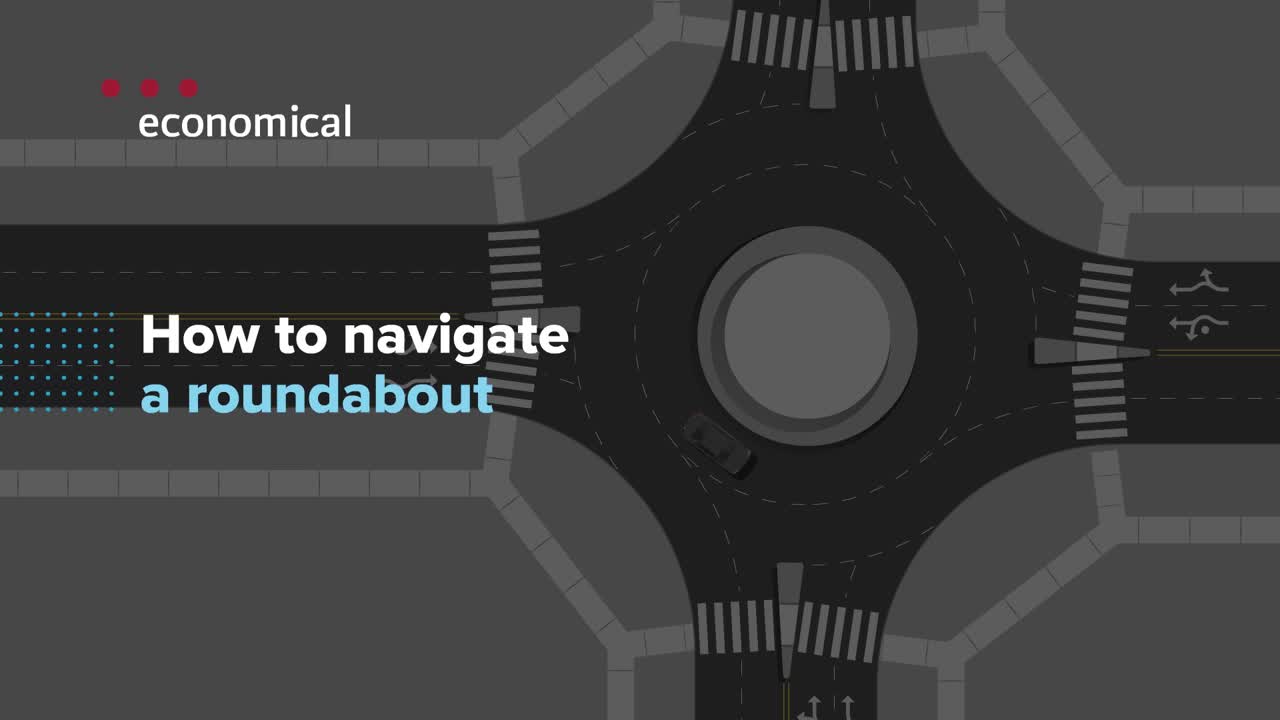How to navigate a roundabout
Written by Stephanie Fereiro | Published on: March 27, 2018 | Updated on: July 12, 2023 | Categories: Car insurance
Have you noticed more and more roundabouts popping up on roads around your neighbourhood? These circular intersections are designed to improve traffic flow, decrease the number of serious collisions, allow for easier left turns, and reduce the emissions produced by vehicles idling at red lights. While roundabouts are effective when used properly, they can be a little intimidating if you're unfamiliar with how to use a roundabout.
It's important to learn the basic roundabout rules before you encounter one. Next time you use a roundabout, take these tips for a spin to prevent a collision:

- As you’re approaching the roundabout, choose your exit and your lane.
- Do not change lanes once you’re in the roundabout.
- Yield to pedestrians and vehicles in the roundabout.
- Turning right: Signal right as you enter the roundabout. Keep your right signal on until you’ve exited.
- Straight through: Don’t signal as you enter the roundabout. Use your right signal to exit.
- Turning left: Signal left as you enter and drive through the roundabout. Use your right signal to exit.
Don’t let roundabouts drive you around the bend. Drive safely out there.
Here's how to use a roundabout:
- Choose your lane. As you're approaching a multi-lane roundabout, there should be a sign that indicates which lane you need to take to get to each exit. Identify your desired exit and signal to get into the correct lane before you enter the roundabout. Don't change lanes once you're in the roundabout.
- Signal your turn. Signal in the direction you want to go as you're approaching the roundabout. Think of a roundabout like a normal intersection:
- If you’re turning right, you need to signal to the right before you enter
- If you’re heading straight through, there’s no need to signal
- If you’re turning left, signal to the left before you enter
- Watch for pedestrians. Before you start moving into the roundabout, slow down and yield to pedestrians crossing or waiting to cross at the crosswalk.
Note: In most cities, vehicles have to yield to pedestrians — but in some cities, pedestrians have to yield to vehicles. Be sure to follow the road signs as you approach a roundabout.
- Yield to traffic in the roundabout. Yield to traffic in all lanes before entering the roundabout, especially if the roundabout has signs stating traffic in multiple lanes may exit at any time. Remember to stay in your lane once you've entered.
- Watch for pedestrians again. Keep an eye out for pedestrians crossing the roundabout at your upcoming exit, and don't follow other drivers too closely in case they stop suddenly at the crosswalk.
- Signal your exit. No matter which exit you're taking, use your right signal to indicate you're ready to exit the roundabout.
For single-lane roundabouts, all of the same rules apply, but you won't need to choose a lane before entering.
Bonus tip: If you're approaching a roundabout at the same time as a large transport truck or bus, don't pull up directly beside them. Depending on its size, a truck or bus may need to use both lanes to get through the roundabout.
Sometimes accidents happen, even when you drive carefully and follow the rules of the road. Take a little time to familiarize yourself with the information you'll need to provide to your insurance company if you have to make a car insurance claim and contact your group's licensed broker to make sure you have the coverage you need to protect you in the event of an accident.
Want to help other drivers stay safe in roundabouts, too? Share these tips on Facebook or Twitter.